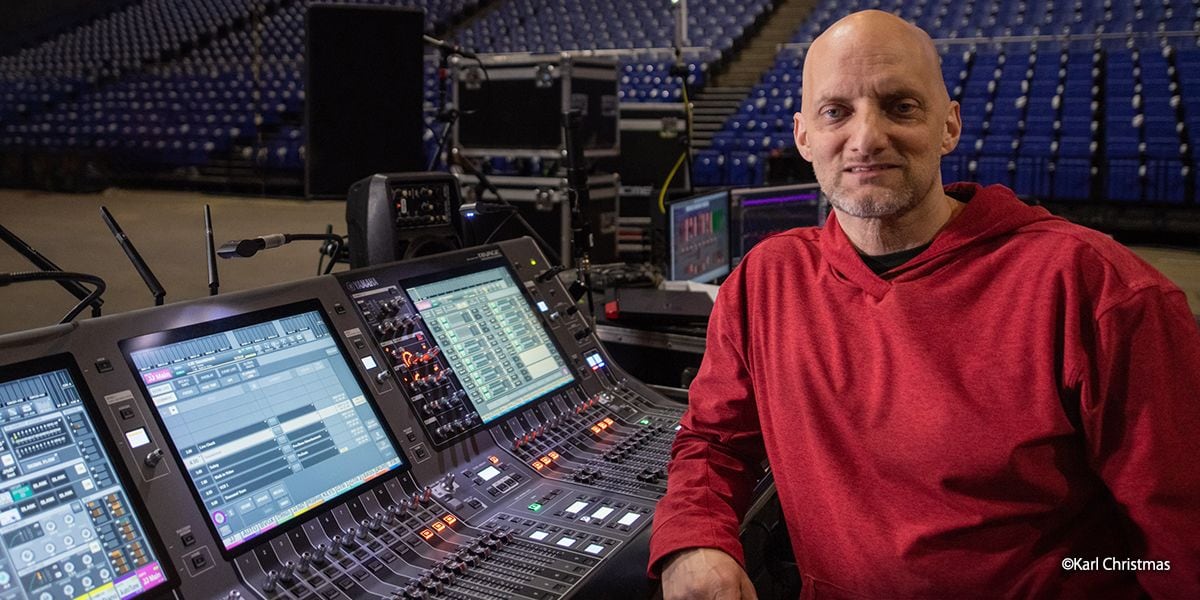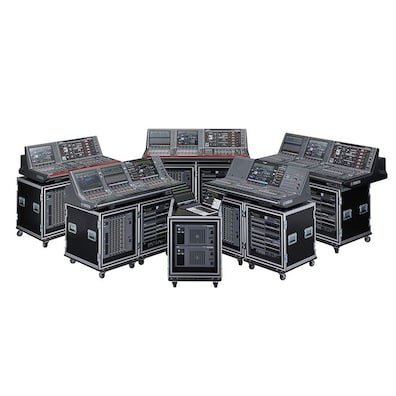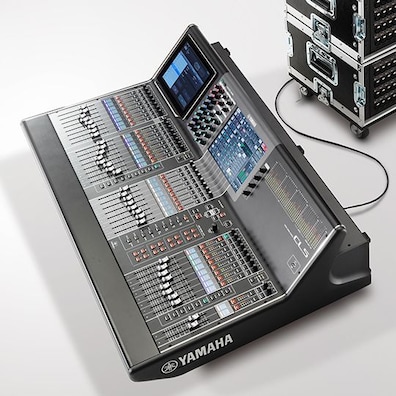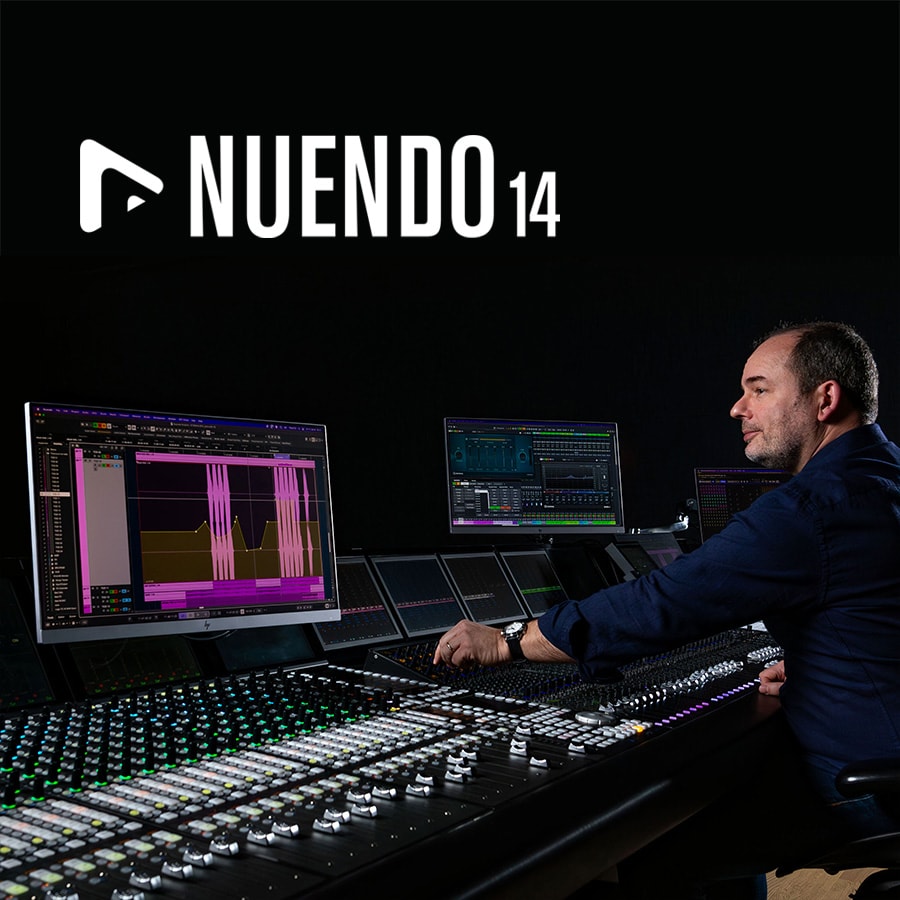A Prince Amongst Engineers: Scottie Baldwin Shares his Mixing Philosophy

Renowned as the longstanding Front of House engineer for Prince, Lady Gaga and, more recently, Singaporean superstar JJ Lin, Scottie Baldwin has a refreshing philosophy about audio mixing and the modern live engineer’s role. A longtime user of Yamaha digital mixers, when JJ Lin played a UK arena show this year, Scottie took time out to talk about his approach.
Like many sound professionals, Scottie Baldwin began his career wanting to be a musician. However, discovered an ability for the technical side pointed to his future. “I couldn't quite make it as a guitar player, but I quickly found that I was good at taking guitars apart and figuring out how they work. So I married the musicianship with the technical side, which steered me in the right direction,” he says.
It was while working as Prince’s drum tech in the early 1990s that Scottie witnessed and absorbed the artist’s ethic regarding live sound. Having watched several FoH and monitor engineers not come up to Prince’s expectations, he realised that this was his calling. He worked with other artists for several years, but a call from Paisley Park in 2000 resulted in him being Prince’s FoH engineer for the rest of the artist’s life.
From analog to digital
As it happened, his timing was perfect to be at the forefront of live sound’s transition from analog to digital mixing. He well remembers the challenges of analog.
“It was much harder, you got a mix and then tried to augment little things as well as you could,” he says. “And you had to know how to fix things on the go. Back then a lot of desks had op amps and we would have to go out and actually pull the channel during the show. We would move the XLR over, pull the channel out, swap out an op amp on the fly, mute the desk for a second and click it in.”
Many would regard his move to digital mixing as a huge gamble - in the middle of a Prince tour. “I did half the tour on an analog desk and switched to a Yamaha PM1D for the second half,” he smiles. “In many ways I can't believe I got away with it, but it was really just a matter of confidence.
“The most vital thing was to understand gain structure, knowing how things are driven differently in the digital domain,” he continues. “But as soon as I jumped to the PM1D, everything could be very specific and was recallable. For me, Yamaha still had a warm, analog sound in the digital domain. It gave me the precision for what I needed to do, while retaining that musical quality.”
Since his move to Yamaha, Scottie has also mixed artists on the PM5D, CL series and now the RIVAGE PM series. Interestingly, he doesn’t feel the need to user server effects, relying on the internal processing. “If one show is going to be in Venezuela, the next one in London and the next in Canada, I want to be able to take the same show everywhere I go” he says. “I don’t want a long list of what I need to function at each show. Plus it’s also quicker to set up and to break down each time.”
When it comes to processing, his move to RIVAGE PM brought with it the advantages of the onboard Rupert Neve Designs SILK. “Moving up to RIVAGE PM was exciting, because I got Neve on every channel,” he says. “It wasn't just certain card slots having a certain thing - you got everything on everything. It was a case of ‘try SILK Red on this, try Blue on this. It was incredibly easy and user-friendly to try different things. I really like the Red on vocals in particular.”
Mixing philosophy
This brings Scottie to his mixing philosophy, which has stood him in such good stead for a long-term career as an in-demand mixing engineer.
“Prince would spend time at the desk, because he played to every person in the room,” he says. “Before every show, I would find the worst seat in the venue and say out loud ‘Tonight, I'm going to work for you.’ I still single out that seat each time. In my mind I’m doing it for them.”
He continues, “I feel like I'm part of the musical solution. I tell younger engineers that it's really important to find out the relationship each musician has with their instrument. Listen to what they're hearing and replicate that out front.
“It's also really important to understand the material. I mix a lot of Asian artists singing in Mandarin and get translations of every song in English, so I can inform my sensibility about what each song is about. Is it about love? Is it about loss? Is it about longing? Is it about building emotions upward? That tells me how to mix it. At first I had the musical and the technical knowledge, but Prince helped foster the relationship between me, the music, the desk and the audience.”
Another big influence on Scottie was renowned ‘sonic architect’ and studio engineer Dave Hampton, perhaps latterly best known for the posthumous restoration of Prince’s Paisley Park studio.
“Dave was the first to introduce me to the theory ‘the best do the most with the least for the longest’,” he says. “The more elaborate a signal chain is, the more it has room for introducing noise and other issues. Then, when things go wrong, it's almost impossible to get them right again. One trap younger engineers fall into is the old adage that just because you can, it doesn't mean you should. A lot of times you'll go to a snare and there are four different plug-ins. At some point it becomes a wall and the mix doesn't live dynamically, you kind of hear a smear of everything. That's when it's time to start over, to start taking things off.
“The only reason I would veer away from a natural sound is if it's a conceptual difference that the artist wants. If the artist says they want the horn section to sound aggressive on this song, or for it to sound like honey dripping down a wall, I can take that and make changes.”
Audience of millions
Another important factor for Scottie is the potential audience of millions beyond the venue walls.
“In the past, bands would go on tour to sell more records. Now they make records so they can go on tour. But the money made in the room is just for that night, there are lots more fans to be made on social media,” he says. “You're not just a front of house engineer any more - the days of an engineer mixing only for the room are over. Even if you're in clubs, you should be multi-track recording.”
Scottie records at 96kHz, 24bit on Steinberg Nuendo, taking full advantage of the way the control and transport features are integrated into Yamaha’s latest generation digital mixing systems.
“You have to think of the bigger picture,” he says. “You're recording for the artists and for the future, even for posthumous releases. And if they do a live record, suddenly you end up with a production and recording credit. We are living in a time when things on social media have to sound like a record. So the less post-production mixing a producer has to do to get things up on social media, the better.”
A good day’s work
At the end of the day, Scottie says he knows he’s done his job when he’s confident that he did everything possible to make sure everybody - especially that person in the worst seat in the venue - had a great time and heard the content in the way they wanted to hear it. “Or maybe made a new fan out of them or of someone they brought,” he says.
“There are other factors you have to take into account, like the difference between fans in the west and in the east. For example, fans in Asia typically want to hear vocals 25 or 30% higher than a normal mix in the west. And they react differently between songs. I need to make sure the night feels like I was delivering what they want.”
He concludes, “I keep things simple. I can travel anywhere with just a USB stick and have the same show anywhere in the world. And I never think I'm irreplaceable.”
Remember - the best do the most with the least for the longest.
Location
United States




